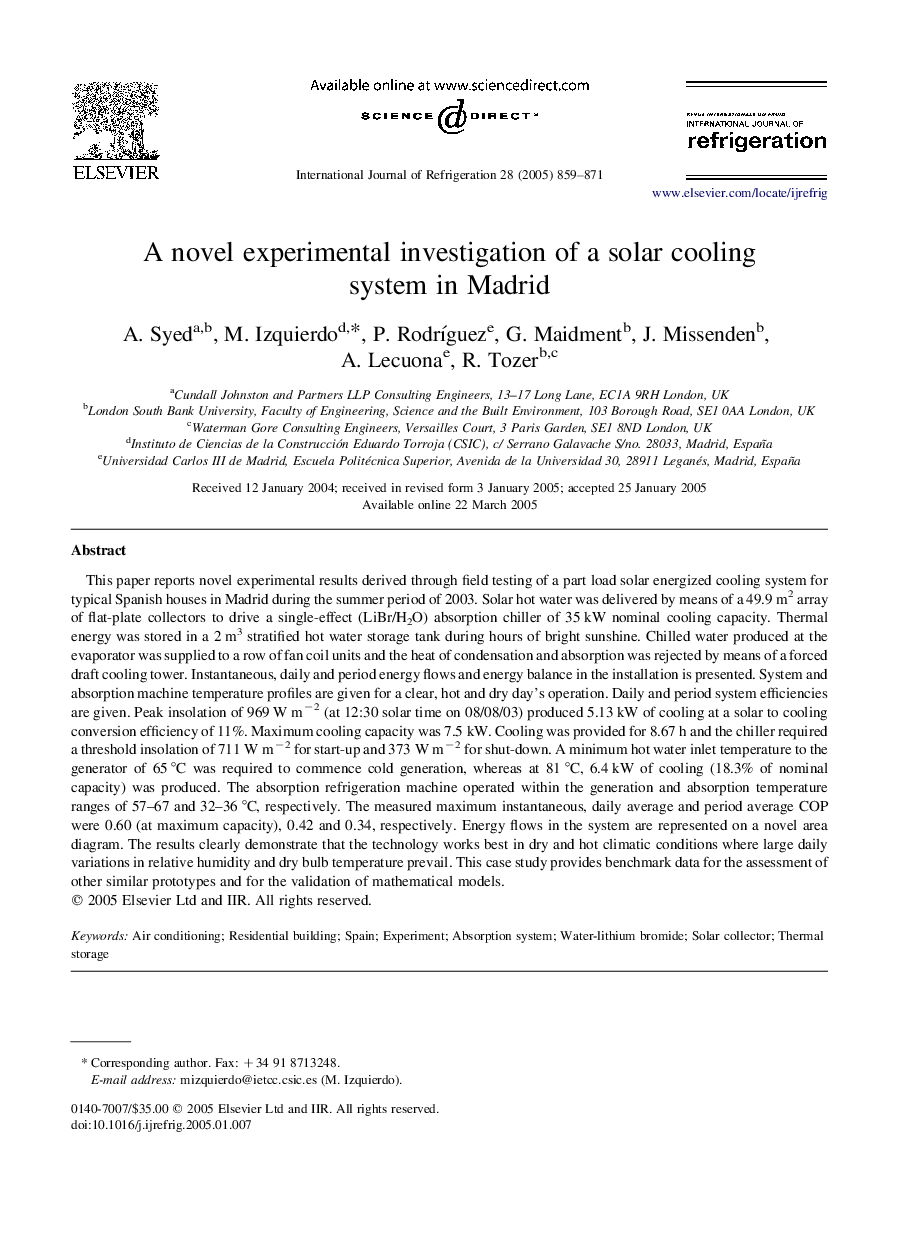| کد مقاله | کد نشریه | سال انتشار | مقاله انگلیسی | نسخه تمام متن |
|---|---|---|---|---|
| 9708169 | 1466495 | 2005 | 13 صفحه PDF | دانلود رایگان |
عنوان انگلیسی مقاله ISI
A novel experimental investigation of a solar cooling system in Madrid
دانلود مقاله + سفارش ترجمه
دانلود مقاله ISI انگلیسی
رایگان برای ایرانیان
کلمات کلیدی
Capteur solaireEau-bromure de lithium - آب لیتیوم برومیدWater-lithium bromide - آب لیتیوم برومیدExperiment - آزمایش یا تجربهExperimentation - آزمایشیSpain - اسپانیاEspagne - اسپانیاAccumulation thermique - تجمع گرماییAir conditioning - تهویه مطبوعConditionnement d'air - تهویه مطبوعThermal storage - ذخیره سازی حرارتیResidential building - ساختمان مسکونیAbsorption system - سیستم جذبSystème à absorption - سیستم جذبSolar collector - گرداورنده خورشیدی
موضوعات مرتبط
مهندسی و علوم پایه
سایر رشته های مهندسی
مهندسی مکانیک
پیش نمایش صفحه اول مقاله

چکیده انگلیسی
This paper reports novel experimental results derived through field testing of a part load solar energized cooling system for typical Spanish houses in Madrid during the summer period of 2003. Solar hot water was delivered by means of a 49.9 m2 array of flat-plate collectors to drive a single-effect (LiBr/H2O) absorption chiller of 35 kW nominal cooling capacity. Thermal energy was stored in a 2 m3 stratified hot water storage tank during hours of bright sunshine. Chilled water produced at the evaporator was supplied to a row of fan coil units and the heat of condensation and absorption was rejected by means of a forced draft cooling tower. Instantaneous, daily and period energy flows and energy balance in the installation is presented. System and absorption machine temperature profiles are given for a clear, hot and dry day's operation. Daily and period system efficiencies are given. Peak insolation of 969 W mâ2 (at 12:30 solar time on 08/08/03) produced 5.13 kW of cooling at a solar to cooling conversion efficiency of 11%. Maximum cooling capacity was 7.5 kW. Cooling was provided for 8.67 h and the chiller required a threshold insolation of 711 W mâ2 for start-up and 373 W mâ2 for shut-down. A minimum hot water inlet temperature to the generator of 65 °C was required to commence cold generation, whereas at 81 °C, 6.4 kW of cooling (18.3% of nominal capacity) was produced. The absorption refrigeration machine operated within the generation and absorption temperature ranges of 57-67 and 32-36 °C, respectively. The measured maximum instantaneous, daily average and period average COP were 0.60 (at maximum capacity), 0.42 and 0.34, respectively. Energy flows in the system are represented on a novel area diagram. The results clearly demonstrate that the technology works best in dry and hot climatic conditions where large daily variations in relative humidity and dry bulb temperature prevail. This case study provides benchmark data for the assessment of other similar prototypes and for the validation of mathematical models.
ناشر
Database: Elsevier - ScienceDirect (ساینس دایرکت)
Journal: International Journal of Refrigeration - Volume 28, Issue 6, September 2005, Pages 859-871
Journal: International Journal of Refrigeration - Volume 28, Issue 6, September 2005, Pages 859-871
نویسندگان
A. Syed, M. Izquierdo, P. RodrÃguez, G. Maidment, J. Missenden, A. Lecuona, R. Tozer,